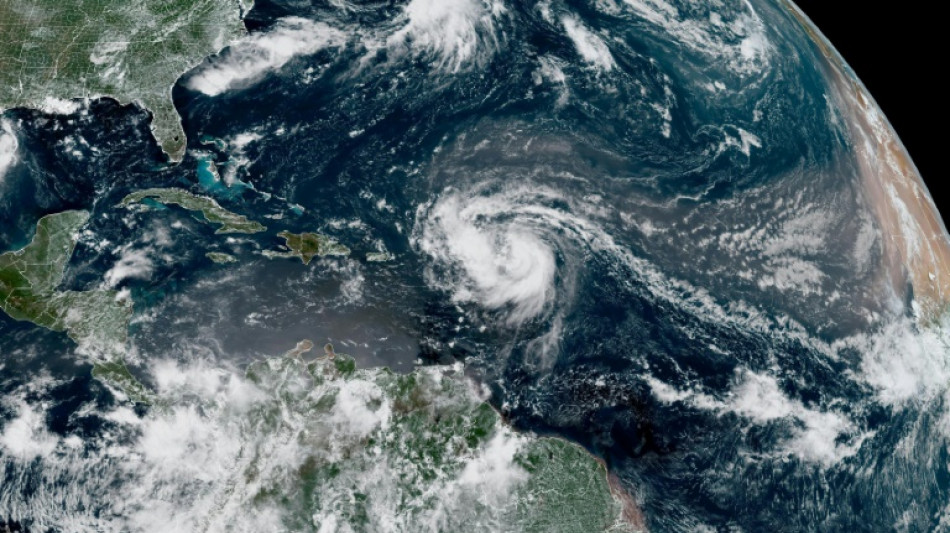
CMSD
0.1900


Hurricane Erin strengthened rapidly to a Category 3 storm early Saturday as it churned towards the Caribbean, with a warning issued that flash floods and landslides were possible.
The US National Hurricane Center (NHC) said the storm's maximum sustained winds had increased to 120 miles (193 kilometers) per hour by 0900 GMT, making it a major hurricane.
Erin, the first hurricane of the Atlantic season this year, was located about 170 miles (275 kilometers) northeast of Anguilla in the northern Leeward Islands, an area that includes the US and British Virgin Islands.
"Continued rapid strengthening is expected, and Erin is forecast to become a Category 4 hurricane later today," the NHC said in its latest bulletin on Saturday.
Tropical storm watches remained in effect for St. Martin, St. Barthelmy and Sint Maarten, with tropical storm conditions possible within 12 hours.
The NHC discontinued a tropical storm watch for Anguilla as the storm moved away from the island.
The hurricane's center is expected to move over the weekend just north of the northern Leeward Islands, the Virgin Islands and Puerto Rico.
The storm could drench the islands with as much as six inches (15 centimeters) of rain in isolated areas, the NHC said.
It also warned of "locally considerable flash and urban flooding, along with landslides or mudslides".
Swells generated by Erin will affect portions of the northern Leeward Islands, Virgin Islands, Puerto Rico, Hispaniola and the Turks and Caicos Islands through the weekend.
Those swells will spread to the Bahamas, Bermuda and the US East Coast early next week, creating "life-threatening surf and rip currents," the NHC said.
The hurricane is forecast to turn northward by late Sunday. While meteorologists have expressed confidence that Erin will remain well off the US coastline, they said the storm could still cause dangerous waves and erosion in places such as North Carolina.
The Atlantic hurricane season, which runs from June until late November, is expected to be more intense than normal, US meteorologists predict.
Several powerful storms wreaked havoc in the region last year, including Hurricane Helene, which killed more than 200 people in the southeastern United States.
The National Oceanic and Atmospheric Administration -- which operates the NHC -- has been subject to budget cuts and layoffs as part of President Donald Trump's plans to greatly reduce the size of the federal bureaucracy, leading to fears of lapses in storm forecasting.
Climate change -- namely, rising sea temperatures caused by the burning of fossil fuels -- has increased both the possibility of the development of more intense storms, and their more rapid intensification, scientists say.
X.So--ThChM